17th-Century Ideas Add Formal Grandeur to the Garden
http://decor-ideas.org 07/13/2015 02:13 Decor Ideas
Our gardens may seem a long way from the well-tended acres surrounding Italian villas and French palaces, but we can take many features directly from them to create our own gardens of formal grandeur. Formal garden design has its roots in Italian Renaissance gardens. These spaces influenced the 17th-century French gardeners who created great gardens of formal grandeur, including André Le Nôtre, who designed the gardens surrounding the Palace of Versailles. These had a formal layout with terraces and parterres, long, straight avenues, water features and topiary, all set within a strict geometric layout.
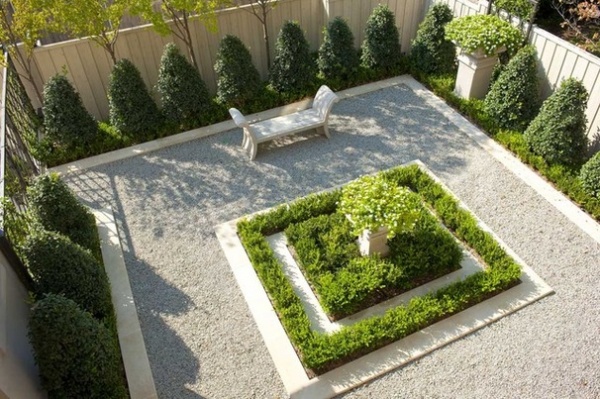
Translating 17th-century formal grandeur into 20th century modernity is about interpreting the main historical design features of the era: the parterre, allées, clipped evergreens, treillage and water features. Simplicity within a carefully controlled geometric plan is the basis for this style of garden. In contrast to many minimalistic gardens of today, the plants, both in topiaries and parterres, are at the forefront.
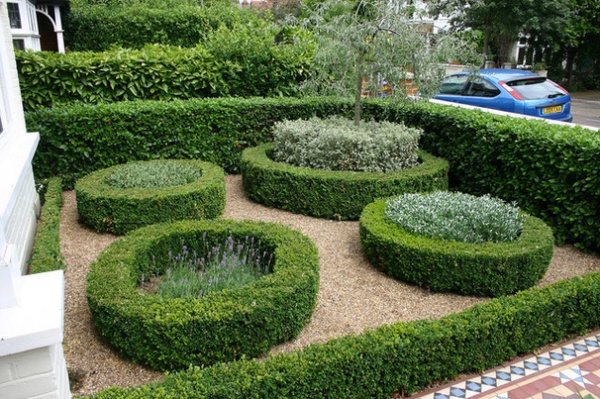
Start with a parterre. A parterre is vital to contemporary interpretations of formal gardens. In 17th-century gardens, parterres filled the flat areas immediately surrounding the house. The parterre developed from the Tudor knot garden, becoming more exuberant with stylized designs created from low boxwood (Buxus spp) hedging. Sand or gravel surrounded central beds that were filled with either low plantings or colored gravel.
This front garden in London features round boxwood parterres surrounding textural shrubs and herbs. A taller hedge encloses the garden, which sits on a gravel base.
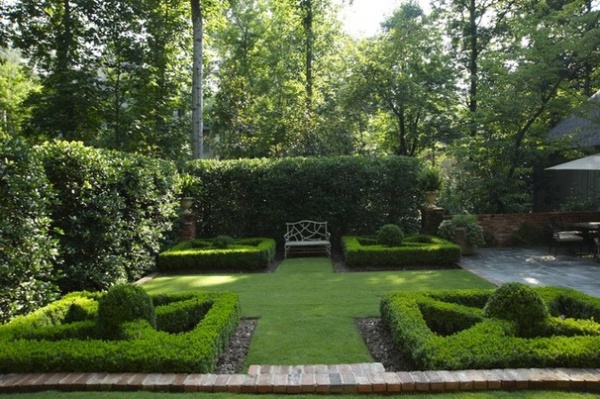
The simplest parterre designs can be the most effective, especially in smaller gardens or outdoor rooms within a larger garden. The plants’ carefully maintained, strictly geometric shape brings great style and simple grandeur to the landscape.
In this garden room, the dark green of the enclosing evergreen hedging gives an extra intensity to the emerald green of the clipped boxwood (Buxus sempervirens, USDA zones 5 to 8; find your zone).
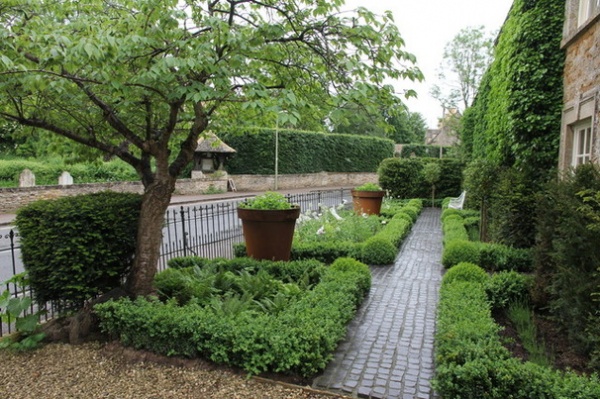
Here, loosely clipped boxwood-edged beds enclose plantings that provide flower and foliage color without distracting from the overall formality of the geometric design. It’s the same feature we’ve seen but with a different feel.
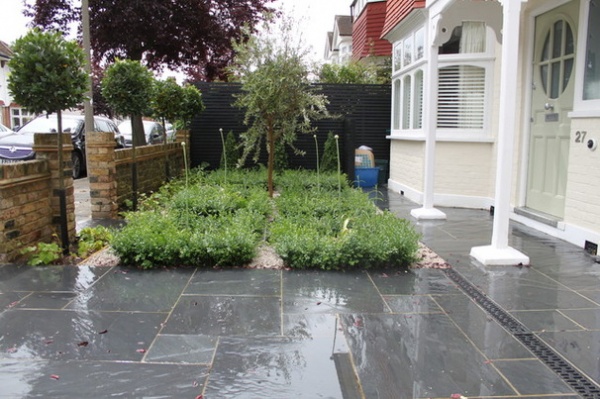
This modern take on the parterre features loosely cut boxwood edging infilled with perennial plantings, including tall ornamental alliums (Allium sp) as an architectural centerpiece. The whole design is completed with standard bay laurels (Laurus nobilis, zones 8 to 10) clipped into balls along the front and boxwood plants clipped into pyramids along the side boundary.
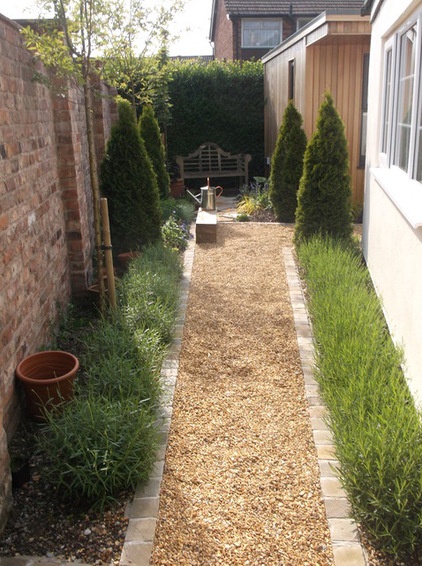
Create an allée. The allée, a path bordered by trees or shrubs, was a central feature of 17th-century formal gardens. We can use allées in our contemporary gardens to bring formality to the smallest spaces.
Straight lines can be as effective in compact gardens as they are in the wide spaces of Versailles. Here, a simple narrow gravel path bordered by lavender leads to a quartet of clipped English Yew (Taxus baccata, zones 5 to 7) and a Lutyens-style bench.
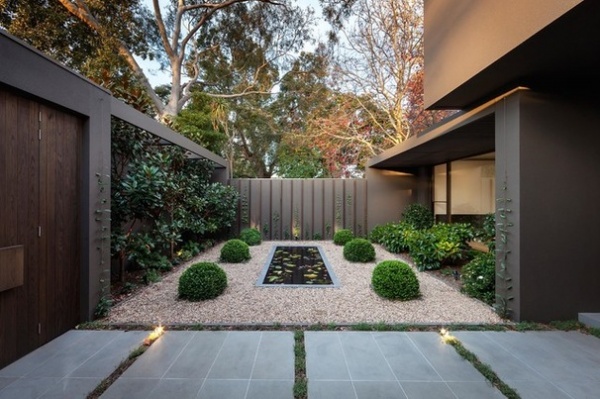
Furnish with topiary. Topiary was originally an expression of man’s control over nature, so it’s not surprising that it was a central feature of formal gardens, where nature was primped and preened into elaborate parterres.
In its simplest form, clipped topiary can highlight the geometric nature of a garden’s design, ensuring a feeling of formality through the precise shapes.
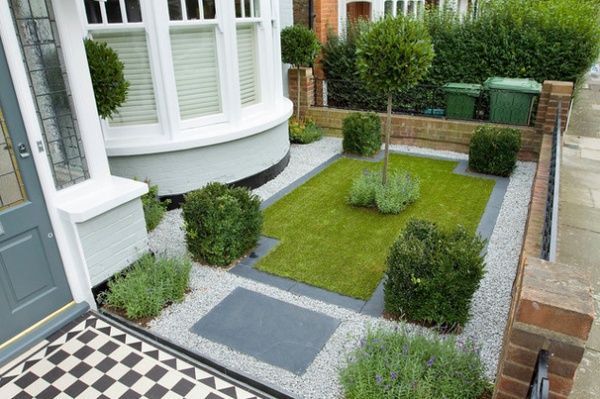
This front garden exudes formal grandeur with its geometric design and multiple uses of topiary. Cubes of clipped boxwood hold the design together, and the tall, clipped standard bay laurels give height to the design.
Geometric formal garden designs can seem two-dimensional, but the use of topiary shapes, whether spheres, pyramids or cubes, brings the third dimension into play.
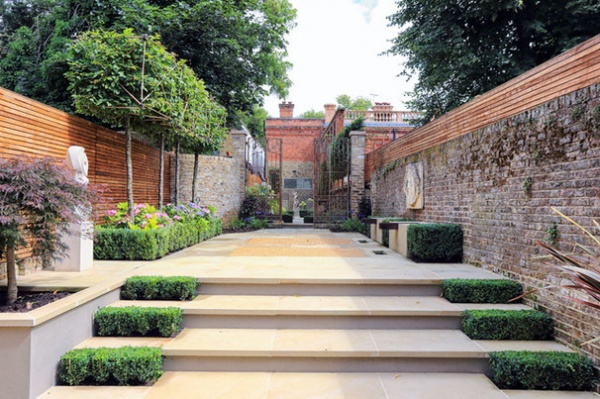
The clean lines of this small formal layout have been heightened by the clever use of blocks of clipped evergreens on the steps and adjacent to the water feature.
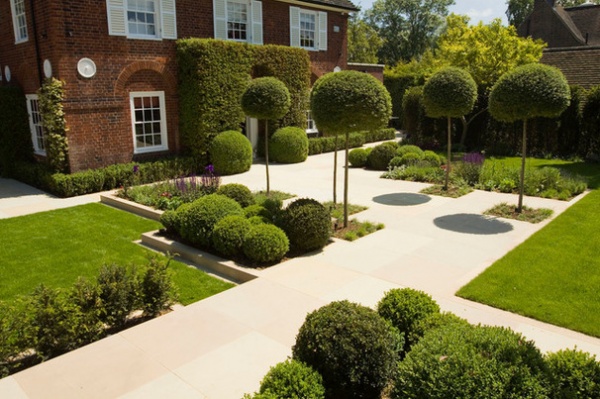
Asymmetry can also bring formality in garden design. Blocks of topiary boxwood balls take the place of low hedge-lined beds in this modern parterre.
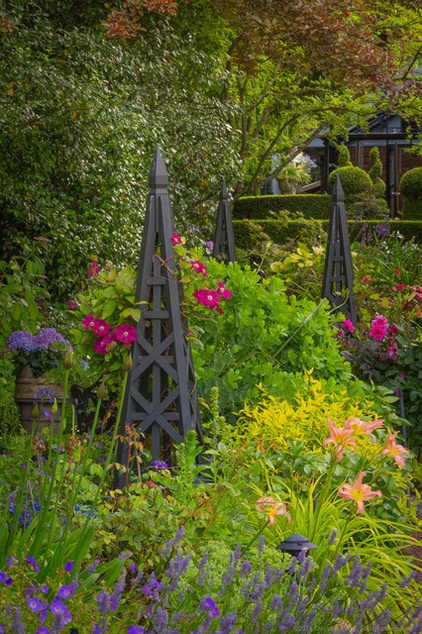
Add a touch of treillage. Treillage, the use of wooden trellis, has been a feature of gardens since medieval times and was popular in 17th-century formal gardens. The obelisk trellis, also called a tuteur, gives a garden height and dimension. Obelisks were often used in 17th-century gardens as a focal point or to mark the center of an open space or meeting of pathways.
In contemporary gardens they bring an atmosphere of formality, especially when used among informal plantings. These garden features can be used to support climbers and roses or for growing fastigiate conifers, but the simplicity of an unclothed obelisk can add a more formal appearance, especially within a looser design.
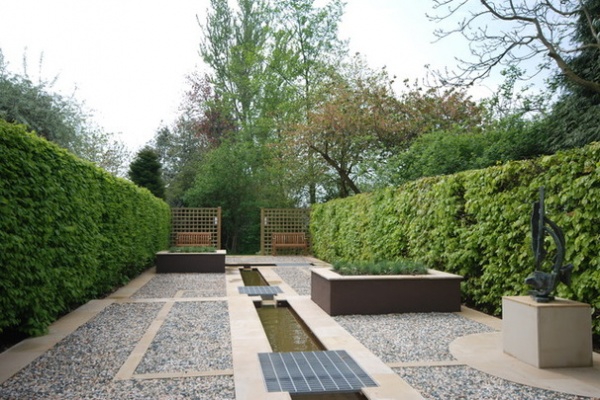
Make room for a water feature. Water features in the grand gardens of the 17th century tended to be lavish and expansive. A favorite was the canal, where pleasure boats floated on long stretches of reflective, still water. This contemporary rill might be the closest we can get to including a canal within a modern design.
Its simple formality and reflective qualities emphasize the garden’s clean, geometric layout.
More: Browse more landscape design ideas on Houzz
Related Articles Recommended












